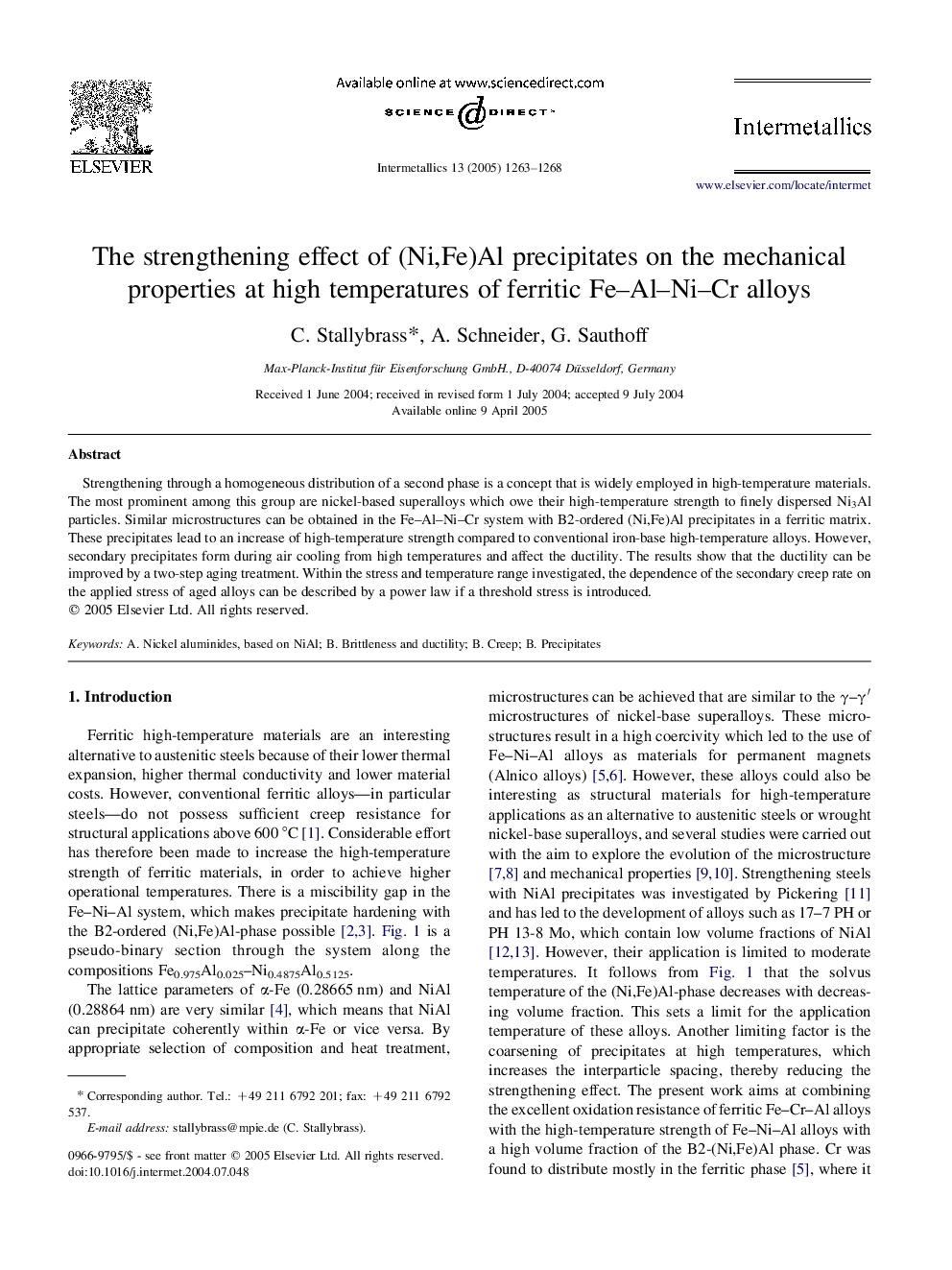| Article ID | Journal | Published Year | Pages | File Type |
|---|---|---|---|---|
| 10655884 | Intermetallics | 2005 | 6 Pages |
Abstract
Strengthening through a homogeneous distribution of a second phase is a concept that is widely employed in high-temperature materials. The most prominent among this group are nickel-based superalloys which owe their high-temperature strength to finely dispersed Ni3Al particles. Similar microstructures can be obtained in the Fe-Al-Ni-Cr system with B2-ordered (Ni,Fe)Al precipitates in a ferritic matrix. These precipitates lead to an increase of high-temperature strength compared to conventional iron-base high-temperature alloys. However, secondary precipitates form during air cooling from high temperatures and affect the ductility. The results show that the ductility can be improved by a two-step aging treatment. Within the stress and temperature range investigated, the dependence of the secondary creep rate on the applied stress of aged alloys can be described by a power law if a threshold stress is introduced.
Related Topics
Physical Sciences and Engineering
Materials Science
Metals and Alloys
Authors
C. Stallybrass, A. Schneider, G. Sauthoff,
